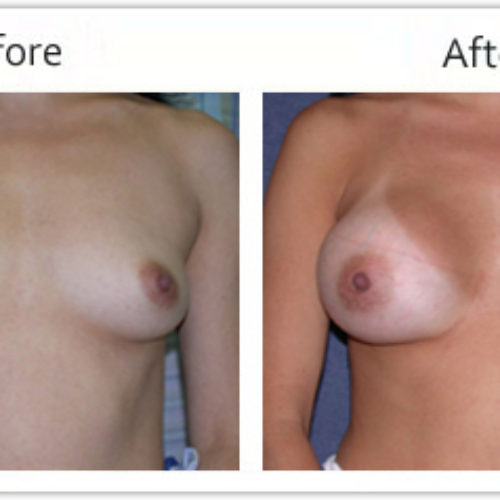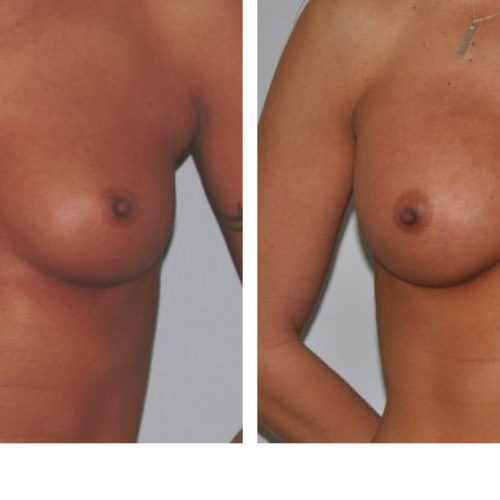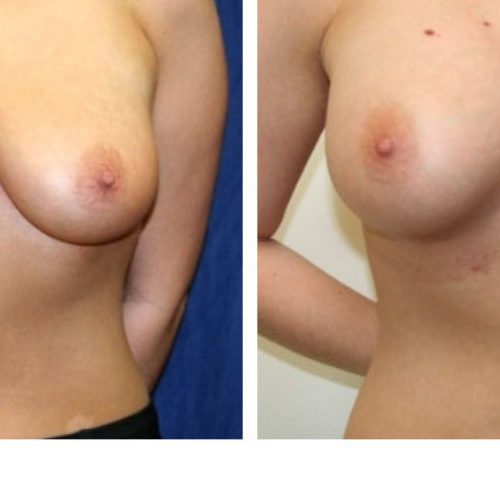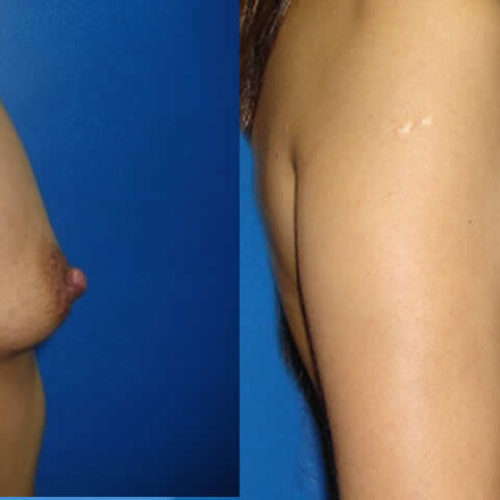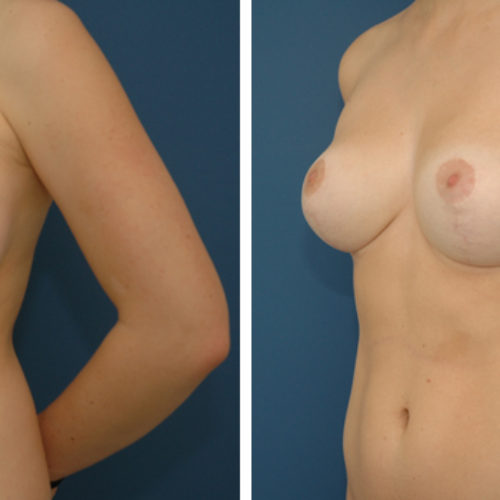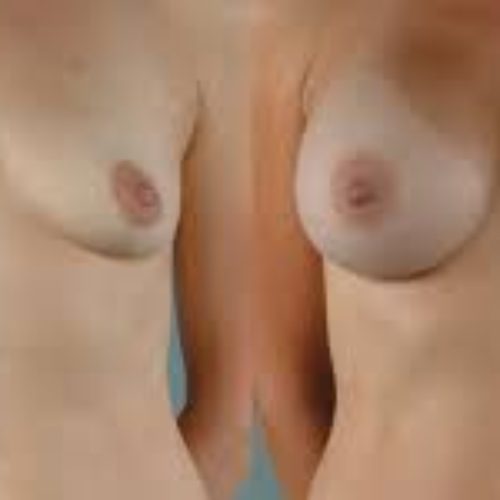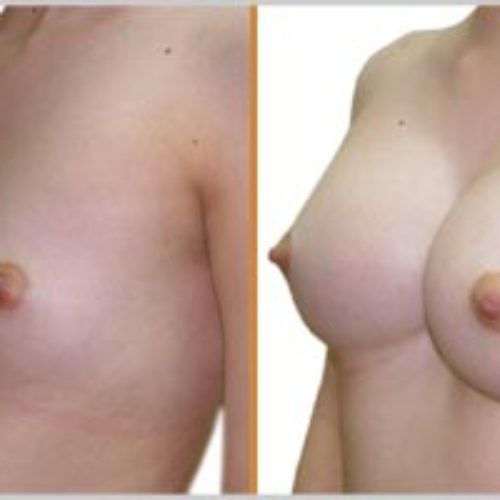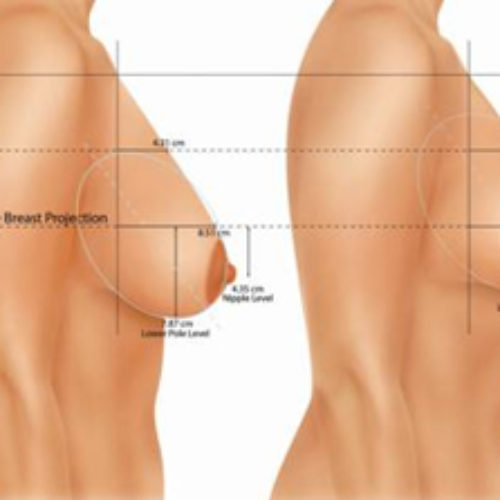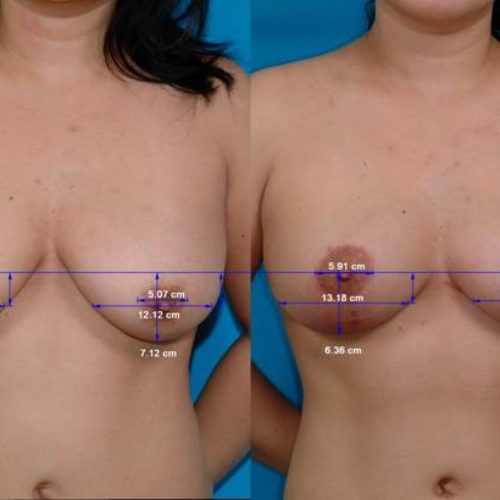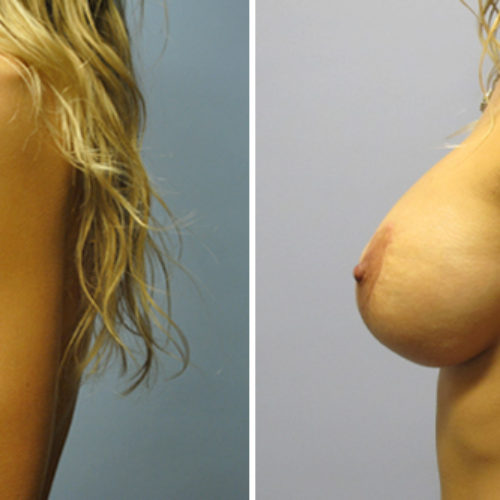Mammoplasty
Mammoplasty

Many women are conscious of the size or shape of their breasts. Whether you think your breasts are too large, too small or not as firm as you would like, they can be a source of great embarrassment, making you feel unfeminine and unattractive. It is not surprising then that breast enhancement cosmetic surgery is one of our most common plastic surgery procedures. Our skilled surgeons have many years’ experience in breast augmentation, breast lift and breast enhancements to give them a completely natural looking appearance. Breast reshaping procedures include: surgical breast enlargement, breast enhancement, breast augmentation, breast lift and breast reduction.
Options in Cosmetic Surgery for Breasts (Mammoplasty)
There are three general categories of cosmetic surgery performed on the breasts (also called mammoplasty):
breast augmentation,
breast reduction, and
breast reconstruction.
Breast Augmentation (Augmentation Mammoplasty)
Breast augmentation is performed to enhance the appearance, size, and contour of a woman’s breasts. Women consider breast augmentation for many different reasons. Some women feel their breasts are too small. Some desire augmentation after their breasts change after pregnancy. Others desire to correct an asymmetry in breast size.
Breast augmentation is performed with implants (see below) that can be placed under a chest muscle or over a chest muscle. The incision can be placed in the axilla (armpit), areola (the area surrounding the nipple), or lower breast fold. In general, all breast augmentations are minimally invasive procedures. For augmentations in which the incision is made in the armpit, an endoscope (thin tube with a small camera and light) may be used during the procedure.
Breast implants are made up of a silicone shell filled with either saline (a salt water solution) or silicone gel. A woman determines her desired size by fitting trial implants. Currently, saline filled implants are used on an unrestricted basis. Silicone gel filled implants are available only to women participating in approved studies.
Breast augmentation is a relatively straightforward procedure. As with any surgery, some uncertainty and risk are expected. Know your concerns and expectations. Review the benefits, risks, and alternatives. Seek consultation with a board certified plastic surgeon.
Breast Reconstruction
Breast reconstruction surgery is often performed in women who undergo mastectomy as a treatment for breast cancer.
The procedure recreates a breast with the desired appearance, contour, and volume. The nipple and areola also are recreated. Normal breast sensation and normal breast function, as with nursing, do not usually return when the sensory nerves or milk glands and ducts have been removed or significantly injured.
The appearance, contour, and volume of the breast can be recreated with implants or with a woman’s own tissue. If an implant is used, the implant is sized to match the opposite breast. When possible, the implant is placed beneath a chest muscle. A breast also can be recreated using a woman’s own tissue. At times, a segment of the lower abdominal wall can be used. Other tissue options for autologous (using your own tissue) reconstruction are back muscle and skin or fat and muscle from the buttock. Sometimes surgery on the opposite normal breast will be required to create symmetry with the newly reconstructed breast.
Breast reconstruction can be done at any time after you have had a mastectomy. The procedure has no known effect on the recurrence of cancer and it does not appear to affect cancer surveillance. However, you will be instructed on breast self-exams and scheduled for routine follow-up appointments for surveillance.
Breast Reduction
Breast reduction surgery is often used in women with large, heavy breasts who experience significant discomfort including neck pain, back pain, and numbness or weakness due to the weight of the breasts. During this procedure, excess skin, fat, and breast tissue are removed. After surgery, breast reduction can cause a change in breast sensation as well as the inability to breastfeed.
After breast reduction, most women report relief from the symptoms caused by having oversized breasts. For more on this topic, see the article on breast reduction surgery.
Breast Lifts (Mastopexy)
In some women, the skin is not strong or resilient enough to support the weight of the breast, causing the breasts to sag. With this condition, called ptosis, there is too much skin compared to breast tissue. To give the breast a lift, the excess skin must be removed. There are several surgical techniques used including:
- Wise pattern. The incision, in the shape of an anchor, goes around the chest and below the breast.
- LeJeour. The incision goes around the areola and down.
- Donut or peri-areolar. The incision goes around the areola only.
This surgery involves some degree of permanent scarring, but products are available that may help to minimize the appearance of scars.
Breast Reduction
Surgery Overview
Breast reduction surgery (reduction mammoplasty) Breast reduction surgery (reduction mammoplasty) removes some of the tissue and skin from the breasts to reshape and reduce the size of the breasts. It can also make the area of dark skin surrounding the nipple (areola) smaller.
To remove tissue and skin from the breast, the surgeon first makes one or more cuts in the breast. After the excess tissue and skin have been removed, the skin is closed with stitches. Sometimes the nipple and areola have to be removed and repositioned.
Sometimes liposuction is used along with surgery. If most of the breast is fatty tissue and if excess skin isn’t a problem, liposuction alone may be enough for breast reduction.
Breast reduction surgery is done in a hospital or surgical center, typically with general anesthesia. The surgery usually takes 3 to 5 hours. An overnight stay is not usually required. For smaller reductions, the surgery may be done with local anesthesia.
Breast lift (mastopexy) Breast lift (mastopexy) is similar to a breast reduction, except that in some cases only skin is removed. A breast lift can raise sagging or drooping breasts, which is a common problem with large, heavy breasts, and can elevate the nipple and areola.
What To Expect After Surgery
Immediately after surgery, gauze is placed over the incisions, and the breasts are wrapped in an elastic bandage or supported with a special surgical bra. In some cases, there may be a small tube in each breast to help drain blood and fluid for the first couple of days. Stitches may be removed in 1 to 2 weeks.
Most women have some breast pain for the first few days after surgery and then milder discomfort for a week or longer. Medicine can help relieve the pain. Swelling and bruising may last for several weeks. Wearing a surgical bra 24 hours a day can help reduce swelling and support the breasts while they heal.
You will likely resume your normal work and social activities within a couple of weeks, unless those activities involve heavy lifting or strenuous exercise. You may need to avoid more vigorous exercise and activities for 3 to 4 weeks or more. It’s important to wear a bra that supports the breasts well, such as a sports or athletic bra.
You will have visible scars on your breasts after breast reduction surgery. These are almost always in areas that can be covered by a bra or swimsuit. Scars may fade over time, but they will not disappear.
Why It Is Done
Breast reduction surgery is done to change the size, weight, firmness, and shape of the breasts. You may decide to have breast reduction surgery to:
- Feel more comfortable. Large, heavy breasts can cause back and neck pain, skin irritation, and posture problems. The constant pull of heavy breasts may make bra straps leave painful indentations in a woman’s shoulders. Breast reduction surgery can eliminate these problems in most cases.
- Reduce the limitations that large, heavy breasts place on participation in sports or other activities. Some physical activities may be painful or awkward for women who have large breasts.
- Alter your appearance. Large breasts, especially when they are out of proportion to your height and weight, can be embarrassing. Teenagers and young women with large breasts may especially feel self-conscious wearing swimsuits and other types of clothing due to unwelcome attention to large breasts. It also may be hard to find clothes that fit well
You will likely resume your normal work and social activities within a couple of weeks, unless those activities involve heavy lifting or strenuous exercise. You may need to avoid more vigorous exercise and activities for 3 to 4 weeks or more. It’s important to wear a bra that supports the breasts well, such as a sports or athletic bra.
You will have visible scars on your breasts after breast reduction surgery. These are almost always in areas that can be covered by a bra or swimsuit. Scars may fade over time, but they will not disappear.
How Well It Works
Women who have breast reduction surgery are often extremely satisfied. It can make the breasts smaller, firmer, lighter, and more evenly proportioned. It usually relieves the physical discomfort and pain caused by large breasts.
The results of breast reduction surgery are considered permanent. But the breasts may become larger or their shape may change as a result of pregnancy, weight gain, or weight loss.
Risks
The most common risks of breast reduction surgery include:
- Scars. Breast reduction surgery always leaves visible scars on the breasts. But how bad the scars are varies from person to person and by the type of incision. Although red and swollen at first, scars typically fade over time. But scars may remain very noticeable in some women long after surgery. Fortunately, the incisions usually can be limited to areas of the breast that can be covered by a bra.
- Unevenly positioned nipples, or breasts that are not the same size or shape.
- Loss of feeling in the nipples or breasts. This is often temporary, lasting a few months. But in some women it lasts much longer or becomes permanent. Because some women with large breasts do not have a lot of feeling in their breasts before surgery, this may not be a concern.
- Inability to breast-feed after surgery. Some women may still be able to breast-feed, depending on what type of reduction was done.
Less commonly, damage to the breast’s blood supply may occur during surgery. This may delay the skin’s healing process. Loss of part or all of the nipple and areola can also occur, but this is not common. - Excessive bleeding during surgery.
- Infection.
- Reaction to the anesthesia.
- Blood clots in large veins traveling up to the heart and lungs (pulmonary embolism). This is not common.
Other risks of surgery include:
These risks can be serious or even life-threatening, but they rarely occur.
What To Think About
Keep in mind that breast reduction may make breast-feeding difficult or impossible in the future. Some women may still be able to breast-feed after having reduction surgery.If you are thinking about having a breast reduction, contact your insurance company. Some insurance companies cover some or all of the costs of breast reduction surgery if surgery is being done to relieve back pain, skin problems, or other medical problems caused by large or heavy breasts. They typically will not cover breast reduction surgery being done solely to change the appearance of the breasts, because it is not considered a medically necessary procedure when done for this reason.
Breast Enlargement
Surgery Overview
During surgery to enlarge the breasts (augmentation mammoplasty), an implant is placed under the breast tissue or under the chest muscle beneath the breast. An implant is a soft silicone shell filled with silicone gel or a saline (saltwater) solution.
To position the implant, an incision is made in the bottom crease of the breast, the armpit, or along the lower edge of the areola (the colored area surrounding the nipple). The implant is inserted through the incision and may be placed under either the breast tissue or the chest muscle beneath the breast. Some doctors believe that putting the implant beneath the chest muscle lowers the risk for a condition called capsular contracture (hardening of tissue surrounding the implant) and interferes less with mammography than when the implant is under the breast tissue but in front of the muscle. After the implant has been carefully adjusted to the correct shape and position, the incision is closed with stitches.
A breast lift (mastopexy) may be done at the same time as the breast enlargement. A breast lift can raise sagging or drooping breasts and elevate the nipple and areola. To lift the breasts, excess skin from the bottom of the breast and the area around the areola is removed. The remaining skin is then brought together, which tightens and raises the breast. A breast lift requires larger incisions than a breast enlargement alone. Incisions may extend from the areola down to the crease where the bottom of the breast meets the chest.
Breast enlargements and lifts are usually done as outpatient procedures in a hospital or outpatient surgery center. An overnight stay in the hospital is not needed unless there are complications during surgery. General anesthesia is typically used, although local anesthesia or an epidural may be used.
What To Expect After Surgery
Immediately after the surgery, gauze is taped over the stitched incisions, and the breasts are wrapped in an elastic bandage or supported by a special bra. The stitches may be removed in 7 to 10 days.
Most women have some swelling, bruising, and soreness in their breasts for several days after the procedure. Medicine can help relieve the pain. Swelling and bruising may last for several weeks. Some women also have a burning sensation in their nipples right after surgery. Wearing a supportive bra 24 hours a day can help reduce swelling and support the breasts while they heal.
Most women can resume their normal work and social activities within a few days, unless those activities involve heavy lifting or strenuous exercise. Your doctor will tell you when you can return to more vigorous exercise and activities.
You will have scars after breast enlargement surgery. But these are usually in well-concealed areas (such as the crease under the breast, the armpit, or the border of the areola). These procedures are designed to minimize scarring so that incisions are not easily seen. Scars usually fade after several months. Having a breast lift in addition to an enlargement leaves larger, more visible scars.
Why It Is Done
Breast enlargement surgery is done to increase the size of the breasts and enhance their shape. You may decide to get breast implants to:
- Enhance breasts you consider too small. The definition of what is “too small” (or too large, for that matter) varies from woman to woman. There is no universal standard below which breasts are considered too small. If you are content with the size of your breasts, then they are not too small.
- Restore the size or shape of the breasts after significant weight loss or pregnancy. A breast lift may be done at the same time as the enlargement in these cases.
- Make the breasts more evenly proportioned. In many women, one breast may be larger or sit higher than the other.
Breast implants may also be used to reconstruct breasts after surgery for breast cancer (mastectomy).
How Well It Works
Breast enlargement surgery can increase your breast size by one or more bra cup sizes. It can also reduce differences in size and shape between your breasts.
Breast implants will not prevent the breasts from sagging as a result of future pregnancy, weight gain or loss, or aging.
Most women who have breast implants will need at least one more implant surgery in their lives.
Risks
Breast implants may make it harder to detect breast cancer on a mammogram. Other risks of getting breast implants include:
- Capsular contracture. This condition is one of the most common problems caused by breast implants. It occurs when scar tissue around the implant hardens and begins to squeeze the implant. It can cause hardening of the breast tissue, rippling in the skin of the breast, and changes in the shape of the breast. It may also be painful. Surgery is sometimes needed to remove the scar tissue or replace the implant when capsular contracture develops.
- Loss of feeling in the nipples or breast tissue due to nerve damage. Often this is temporary, but it may be permanent in some women.
- Differences in size or shape of the breasts after surgery.
- Changes in the implant. Normal activity or an injury to the breast can damage the implant, causing it to leak, deflate, or rupture. Over time, the implant may harden, develop ripples, shift position, or change shape. Surgery may be needed to remove the implant and replace it (if desired) if any of these changes occur.
- Infection (not common). This can occur at any time, but it typically occurs during the first week after surgery. In some cases of infection, the implant may have to be removed for several months and then replaced.
- Blood collection under the skin, or hematoma (uncommon).
- Abnormal scarring (uncommon).
Having more than one procedure at the same time, such as a breast lift and breast enlargement, increases the risk of problems after the surgery.
What To Think About
Newer silicone implants contain a gel-like material instead of a liquid. These types of implants do not leak if they are punctured or cut.
Most women who get breast implants are satisfied with the results. You are likely to be happy with the results if you have clear, realistic expectations about the surgery and share these with your doctor. Implants will make your breasts larger and perhaps give them a shape you are more pleased with, but no surgeon can guarantee perfection.
Also keep in mind that:
Insurance will not cover the cost of breast implants unless they are being used as part of breast reconstruction after surgery for breast cancer. Likewise, insurance may not cover the costs of treatment for complications that arise during or after surgery or for future surgeries to remove or replace the implants. Check with your insurance company to find out whether getting breast implants will affect how much you pay for your insurance and what you are covered for.
Breast cancer screening (mammography) after surgery
A breast implant can hide abnormal breast tissue or lesions, making detection of abnormal or cancerous breast tissue during mammography more difficult. To produce accurate, high-quality images, the breast has to be squeezed fairly tightly. In rare cases, this causes a breast implant to leak or rupture. Also, scarring and calcium deposits around the implant may look like cancerous tissue and make the mammogram harder to interpret.
If you have breast implants and need to have a mammogram, tell the technician when you schedule the mammogram what type of implants you have (saline or silicone) and whether they are behind or in front of the chest muscle. You may need more views taken than are done during a typical screening. In some cases, MRI scans may be needed to produce a clear image.
Controversy over breast implant safety
Research studies are looking at the possible connection between silicone gel breast implants and connective tissue disease. So far, studies don’t show that these implants cause connective tissue disease
A few women with breast implants have developed anaplastic large cell lymphoma (ALCL) that started in breast tissue near the implant. Although these cases are very rare, the U.S. Food and Drug Administration (FDA) is gathering information about a possible connection between implants and ALCL.
Persian International Health Tourism is a private company act as a facilitator between patients/visitors, best medical teams and various hospitals suggesting best available options based on your required treatment or other services.


